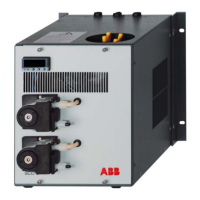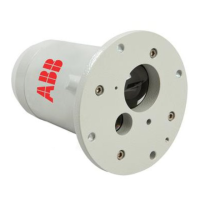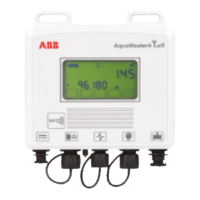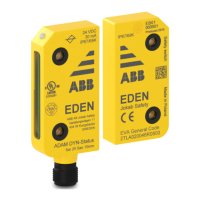FAQ and troubleshooting 49
Q. The CoreSense system LED is blinking yellow or blinking red.
A. Connect to the web interface on the service port and navigate to the Event tab. The event log should
clarify the nature of the issue. Make sure that the thermal pump is on.
Q. The CoreSense hydrogen LED is yellow or red.
A. Verify your WARNING and ALARM settings. If they are as expected, verify the current reading. Perform
a lab DGA to confirm the CoreSense levels.
Q. The CoreSense moisture LED is yellow or red.
A. Verify your WARNING and ALARM settings. If they are as expected, verify the current reading. Perform
a lab DGA to confirm the CoreSense levels.
Q. The hydrogen or moisture reading is normal (below the user-configured threshold) but still a
WARNING or ALARM is reported
A. The CoreSense has latching alarms, which means that once a threshold is crossed, the WARNING or
ALARM needs to be acknowledged in the Event tab of the web interface. This is required even if the level
falls below the user-configured threshold.
Q. In the web interface, not all measurements are shown on the charts in the Hydrogen or Moisture
tab.
A. To see all measurements, use the Export feature and open the
.csv
file.
Q. Why does CoreSense-reported hydrogen or moisture levels differ slightly from lab DGA results?
A. The CoreSense is calibrated in a reference oil that may have chemical and physical properties that
differ slightly from the transformer oil in your application. This may cause small variations in absolute
accuracy. The lab DGA method is still the reference method for dissolved gas analysis. However it may
suffer from handling issues from sample extraction, to transport and at the lab. A concern specific to
hydrogen is its volatility. Samples should be sent to the lab in a timely manner. ABB recommends always
using the same lab to ensure consistent results over time. The CoreSense allows for small differences to
be reconciled using its software settings.
Q. Do we need to de-energize the transformer prior to installing the CoreSense?
A. While it is possible to install the CoreSense without de-energizing the transformer, ABB recommends
that the transformer be de-energized to perform the installation. You should also comply with your
company policies and recommendations regarding equipment installation.
Q. How long does it take to install the CoreSense on a transformer?
A. Typical installations should take less than 2 hours.
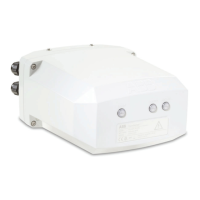
